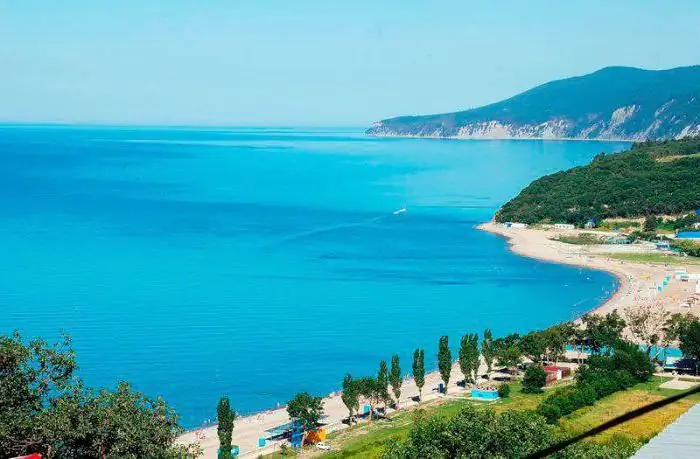- Author Harold Hamphrey [email protected].
- Public 2023-12-17 10:06.
- Last modified 2025-01-24 11:10.
Petrovsky plant is one of the oldest metallurgical industries in Siberia, which gave birth to the city of the same name (now Petrovsk-Zabaikalsky). It is known in history as a place of exile for the Decembrists. Unfortunately, it suffered the fate of many famous enterprises - in 2002 the plant was declared bankrupt.

Birth
Under Catherine the Great, Russia quickly acquired new territories. Thousands of merchants, Cossacks, researchers and travelers explored the vast expanses of Siberia and the Far East. Settlements appeared, fortresses and trading posts were built. First of all, building materials and metal were required for the arrangement. Forests and stones were in abundance, but the simplest metal products had to be delivered thousands of kilometers away.
Merchant Butygin turned to Catherine II with a request to build an iron-making production in the Trans-Baikal Territory. The Petrovsky plant (as the Empress called it) began to be built in 1788 by the efforts of exiles and recruits. A settlement of the same name arose around the enterprise, which grew over timeto the size of a city.
The start of the journey
1790-29-11, after two years of construction, the Petrovsky plant produced the first products. The ore was mined nearby, near the Balyaga River. Initially, only one blast furnace operated, its capacity was enough to cover the needs of a small population of nearby regions. Production consisted of:
- Iron-smelting, converting sections.
- Forges.
- Anchor, carving, molding factory.
- Dams.
- Hospital, barracks, shop and other facilities.
The workforce consisted of 1,300 people, many of whom were exiles. More than 200 Cossacks and soldiers were kept for their protection.
The main products were cast iron, steel and products from them. In 1822, the plant expanded, the assortment increased due to sheet, strip and broad strip iron. During this period, the first steam engine in the history of the country's ferrous metallurgy, designed by Litvinov and Borzov (based on the work of Polzunov), was built at the enterprise.

Decembrists
After an unsuccessful uprising, more than 70 Decembrists were exiled to the Petrovsky Plant, among them such famous personalities as M. K. Kuchelbecker, N. M. Muravyov, N. A. Bestuzhev, K. P. Thorson, N. P. Repin and others. The wives of some officers also moved here.
However, the authorities did not allow "troublemakers" to the factory, fearing their influence on the workers. The Decembrists mainly performed housework, dug bypass ditches, repaired roads, ground flour with handmillstones. At the insistence of the officers, they organized an "academy" in which they taught the local population to read and write and social sciences. After 9 years of hard labor (1830-39), most of them were released to a free settlement.

Second half of the 19th century
By this time, the Petrovsky plant not only smelted metal, but also manufactured complex products and assemblies. Steam engines made at the enterprise were installed on steamboats cruising along the Shilka, Argun and Amur rivers.
By 1870, a welding furnace, rolling mills, a puddling and bloomery factory appeared in production. There were mechanical, foundry, and blast furnace shops. After the abolition of serfdom, hired labor began to be used, which increased productivity.
At the end of the 19th century, it was decided to lay the Trans-Siberian railway through this area. In 1897, the construction of the Petrovsky Zavod station began, and on January 6, 1900, the first train arrived here.
Twentieth century
Unfortunately for the local population, with the construction of the railway, cheaper metal poured into the region from the Urals. Iron smelting became unprofitable. The economic crisis caused by the defeat in the Russo-Japanese War finally finished off the enterprise. In 1905, the work was almost stopped, only small productions were operating: artistic casting, the manufacture of mechanical and blacksmith products. In 1908, merchants Rif and Polutov bought the plant, reconstructed it and started production. The main customer was the militarydepartment.
After the revolution, despite the low profitability, the company continued to work. A molding hall and a power station were built. Since 1937, "Chuglit" (as the plant began to be called) has exported significant volumes of products to Japan and China.
The Great Patriotic War contributed to the development of production. Being located deep in the rear, the plant was a convenient base for increasing metal smelting and manufacturing scarce products. During the war years, productivity more than doubled: from 27,600 tons of steel in 1940 to 66,200 tons in 1945.
In the post-war years, production capacity was constantly expanded. The smelting of steel, pig iron, and the manufacture of rolled metal increased. The total volume of production in 1960 was 10 times higher than in 1940.

Decay
By the 1970s, local supplies of raw materials were depleted. Ore and fuel had to be imported from afar, which led to an increase in the cost of production. If in the Soviet period they put up with this in order to provide employment for the citizens of Petrovsk-Zabaikalsky, then after Russia gained independence, economic expediency came to the fore.
If today you look at the photo of the Petrovsky plant from afar, it seems that the metallurgical giant is about to straighten his shoulders, smoke pipes. His body seems to be directed to the sky. But the reality is that the last heat was carried out in 2001. A year later, the company was declared bankrupt, production was stopped. Perhaps forever. Thus ended the 211-year history of one of the first-born Russianmetallurgy.






